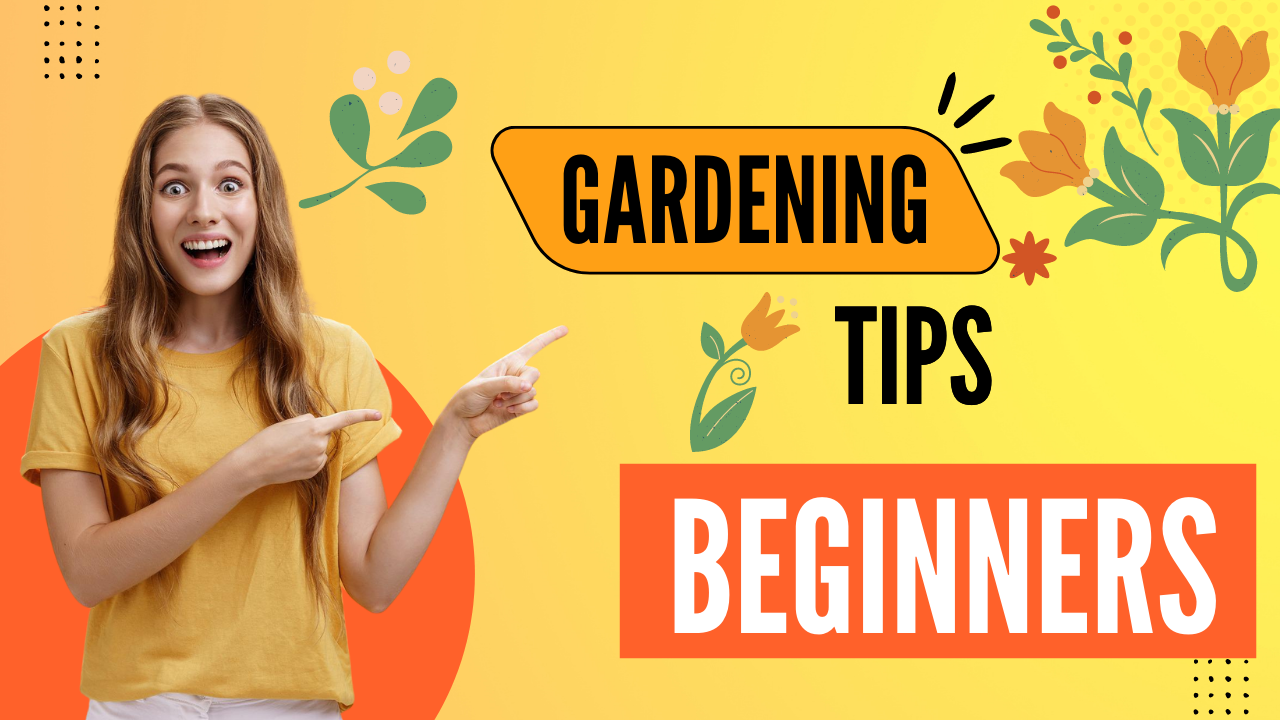Many people are very fond of gardening. They like to see every corner of their house green. Taking care of plants is an important part of their daily routine. But if you’re a beginner in gardening then there are a lot of things you need to know before you start gardening.
You should be aware of the following pointers mentioned below:
- Which plants are suitable for your place?
- What is the correct method of watering?
- How much sunlight is required by different plants?
- What is the right time of giving fertilizer to the plants?
- Which fertilizer is suitable for a particular plant?
In this article, we will cover some of the basic tips for healthy gardening.
Basic Gardening Tips for Beginners
1. Start with minimum plant
- Excess to everything is bad, especially for beginners. If you are planting for the first time then start with only three to four plants.
- Never start with 15-20 plants in the starting. Gradually increase the number of plants in your garden.
- In the beginning, we are not aware of various facts and one mistake can spoil all the plants. So, always start with 3-4 plants, not more than that.
- After 15-20 days, go for 2-3 more new plants and like the way, expand your garden.
2. Select plants according to the space
- For gardening, a big terrace or balcony is not required.
- Plants can be kept in small areas also like windows, near the entrance area, or any corner of the house, and can be hung on curtain rods or nails.
- Plants cannot grow in the dark area, there should be some sunlight be it direct, indirect, bright, or dim.
A different variety of plants is available like:
- Indoor plants
- Outdoor plants
- Big Size Plants
- Small Size Plants
Gardening can be done in any area, sunlight should be there. Select the plant according to the space you have for gardening.
3. Each plant requires contrast treatment
Every plant is unique in its nature hence they need divergent caution and supervision to grow properly. Plants show different behavior in different seasons and climate conditions.
4. Plants need more or direct sunlight
Plants like Tulsi, and Hibiscus need more sunlight. These plants should be kept on the terrace or balcony where the sun is there for at least 4-5 hours.
5. Plants need less or indirect sunlight
- Some plants need only an hour of sunlight like Syngonium, Aglaonema, and many more. These kinds of plants can be kept in windows or inside the home. So, for terrace or balcony gardening go for the plants which need direct or more sunlight.
- For balcony gardening, plants that need sunlight for 3-4 hours can opt. For windows and inside the home indoor plants can be selected.
- Always opt for the right plants according to the place of gardening.
6. List of the plants classified according to the requirement of sunlight
(A) Plants that do not need direct sunlight (but should not be kept in a dark place).
- Monstera
- Aglaonema
- Areca palm
- Money Plant (Pothos)
- Syngonium
- Dieffenbachia
- Sansevieria (snake Plant)
- ZZ plant
- Peace Lily
- Spider Plant
These plants can be kept inside the home where bright sunlight comes.
(B) If you get sunlight for at least 2-3 hours then opt for all the plants mentioned below.
- Succulents
- Caladium
- Lucky Bamboo
- Jade Plant
- Aloe vera
- Vinca
- Curry Leaf
- Christmas Tree
- Devils Backbone
- Croton
- Dracaena
- All Herbs
- Coriander
- Spinach
All these plants can be kept on the balcony or at the entrance area also if direct sunlight is there for 2-3 hours.
(C) List of plants that need sunlight for at least or more than 4 hours for optimal growth.
- Portulaca
- Rose
- Marigold
- Tulsi plant (Holy basil)
- Shami
- Hibiscus
- Aparajita
- Bougainvillea
- Night Jasmine (Parijat)
- Vegetables like tomatoes, brinjal
- All the flowering and fruit plants.
All these plants need full sunlight for proper growth otherwise they will not grow properly.
7. Location of the House
The direction of the house also affects the gardening a little bit but not much because exposure to the sun also depends on the location of the house. East-facing houses get early morning sunlight in summer which is good for plants whereas in winter sunlight is not sufficient for plants in east-facing homes.
- Moreover, if there is a high-rise building in front of your home then you might not get any sunlight on your balcony due to the shade of that high-rise building.
- Despite the direction, people need to understand the time cycle of the area in which they receive sunlight.
- Suppose you are getting scorching sunlight during the afternoon in May -June then plants like caladium or croton (which require sunlight only for 2 hours) can be kept on the balcony at that time and then move in the shade.
- Plants might burn due to red hot sun rays if placed for a longer duration in sunlight.
- Select the plants according to your space and the sunlight that you are receiving in your gardening area.
Cherish the fun of doing Gardening !!
Happy Gardening!!
